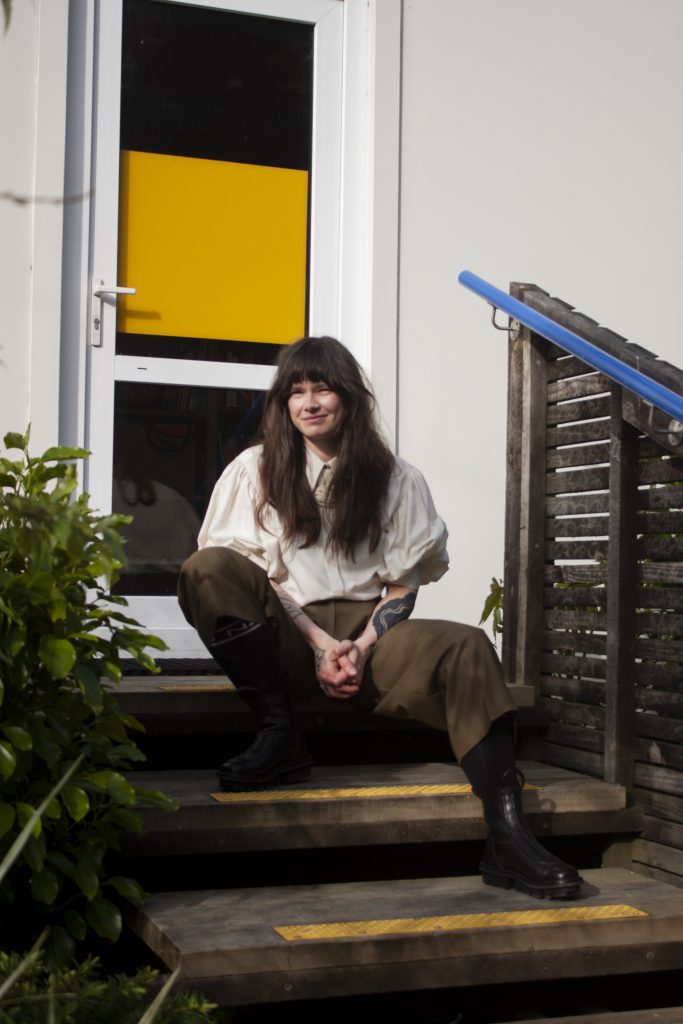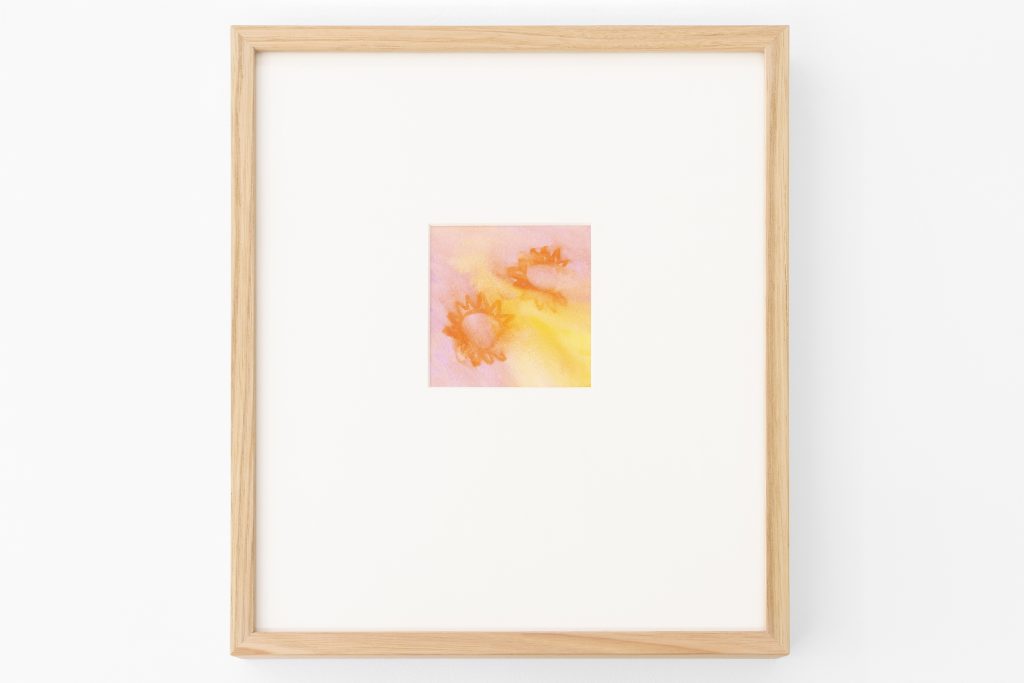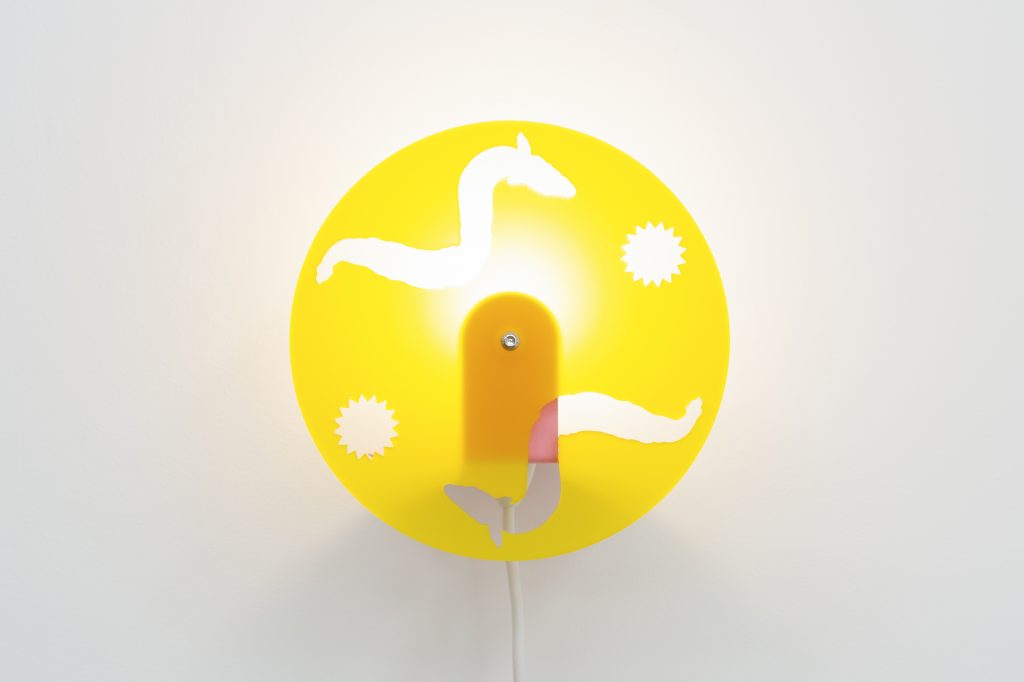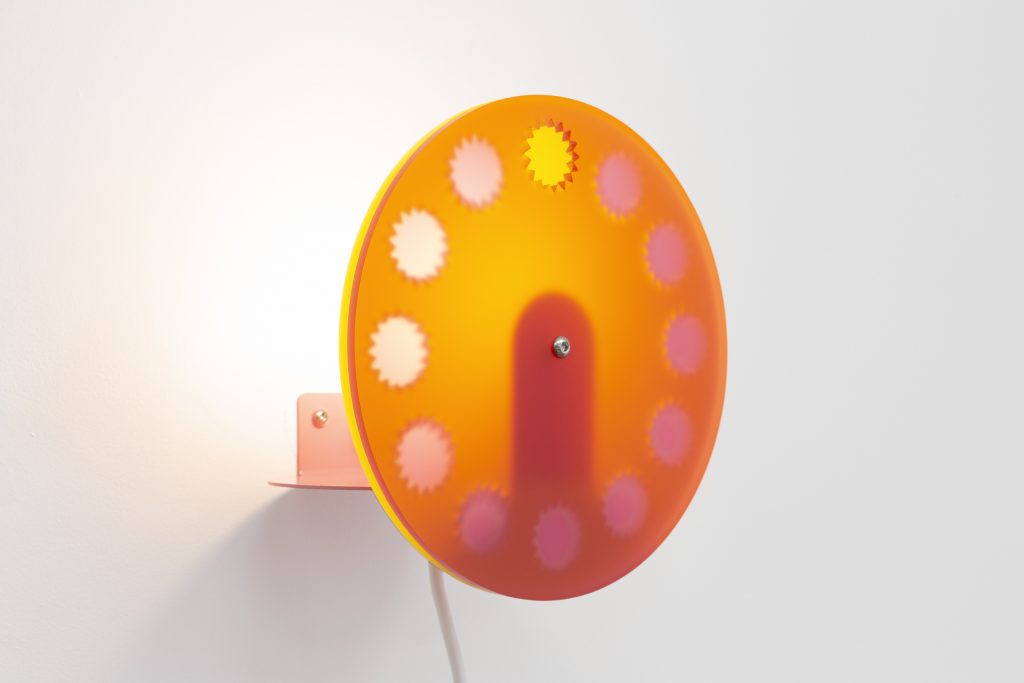
FYI – Turumeke Harrington
Turumeke Harrington (Ngāi Tahu) has a background in Industrial Design, Shoemaking and Fine Arts; she is a mother and partner; a painter and sculptor; a jewellery maker; a designer; and an observer of life. Harrington’s multifaceted practice is both prolific, and entirely her own.
Harrington’s interest in whakapapa, space, colour and material sees her creating large sculptural installations at the intersection of art and design. Her clarity of form and function is supplemented by a poetic pragmatism and a commitment to making that is at once playful and provocative. Her sympathetic approach to materials combines with a bold colour palette to create engaging works that speak to the artist’s own personal relationships, cultural anxieties, and everyday musings.
Page Galleries (Te Whanganui-a-Tara Wellington) had a solo exhibition of her work titled, (Tīkaro) Slowly Dawning, at the gallery in May this year. Celebrating the ephemeral and transformational properties of light, paint, and water; this exhibition once again illustrates Harrington’s remarkable ability to work across all manner of mediums and materials to create joyful and engaging work full of narrative and aesthetic harmony and deftly deliberate discord. Read about the exhibition below.
Harrington also has an online store, where you can explore (and buy) a range of products made and designed by the artist. Click here to shop.
Page Galleries will be presenting works by Turumeke Harrington at the 2022 Art Fair in November, alongside paintings by Max Gimblett and Reuben Paterson.

Image above: Installation view, Tīkaro (Slowly Dawning) photography by Cheska Brown.
Image right: Turumeke Harrington, photographed by Kate Glasson.
Images left: Turumeke Harrington, Tīkarohia Kia Whiti Mai Te KokoMea (Gouge Away), 2022. Splitting (Dawn, Headaches), 2022. Whakamārohirohi [Trapping Dawn and Dusk] V, 2022. Whakamārohirohi [Trapping Dawn and Dusk] III, 2022. Ārai (Rekareka), 2022. Photography by Cheska Brown. All images courtesy of the artist and Page Galleries.
Light, paint and water coalesce in Turumeke Harrington’s solo exhibition (Tīkaro) Slowly Dawning.
Harrington presents a suite of jelly-coloured light works featuring cut-out motifs of tuna (eel), hare, tī kōuka (cabbage tree), and whetū (star). The frosted acrylic lights appear almost as zoetropes or early animation wheels, lending the creatures a sense of implied movement; the slick iridescent body of a tuna slithering along a rocky river bottom, the strong hind legs of a hare bounding across a grassy field.
Tīkaro – to pick, scoop, tear or gouge out – alludes most literally to the technical process of creating these works, but also speaks to Harrington’s propensity to keep prodding and poking at objects, forms, and materials, endlessly playing with, and playing out concepts until a new idea dawns, swiftly followed by another, and another. So pervasive is Harrington’s tongue-in-cheek style, it’s difficult not to speculate about additional layers of meaning or interpretation, forever wary there is some gag we’ve overlooked. The artist admits that there is a vaguely patriarchal reading to these works, that in her own early kōrero around the lights and motifs she was thinking a lot about the cultural constructions of masculinity.
Whakamārohirohi [trapping dawn and dusk] plays with the idea of whakamārohirohi – to stiffen, become strong or harden up – and the stereotype of the ‘Southern Man’ as a figure defined by his strength and stoicism in the service of colonial forces. This series of unique works builds on an earlier series Whakamārohirohi [with hands like dinner plates], reimagining them at sunrise and sunset. Each the size of a dinner plate, the lights speak to histories of mahika kai with a troubled and complicated understanding of both masculinity and ingenuity: envisioning a future where our thorny and interconnected histories can be pushed up against each other and made into something new.
The whetū motif references the pūrākau (story, myth) of Tāwhirimātea gouging out his eyes in rage at the separation of his parents Papatūānuku and Rakinui, throwing them into the sky to become the stars known as Matariki (‘Ngā Mata o te Ariki Tāwhirimātea’ / ‘The eyes of the god Tāwhirimātea’). Several titles allude to the phrase ‘ki tua o te ārai’ or “beyond the veil”, referring euphemistically to death, but here employed by Harrington in relation to dawn and dusk; those transitional and most ethereal times of day when it seems we might be able to reach through into other realms, picking and gouging holes through the imperceptible veil.
Alongside the twelve coloured lights are a series of corresponding watercolours depicting tī kōuka, their warm hues pulled from the shifting palette of the sky. In contrast to the highly polished industrially manufactured lights, these delicate works on paper reveal something charmingly intimate about the repetitive and meditative act of making, with the artist’s hand, and her delight in the process immediately evident.
(Tīkaro) Slowly Dawning celebrates the ephemeral and transformational properties of light, paint, and water; once again illustrating Harrington’s remarkable ability to work across all manner of mediums and materials to create joyful and engaging work full of narrative and aesthetic harmony and deftly deliberate discord.




